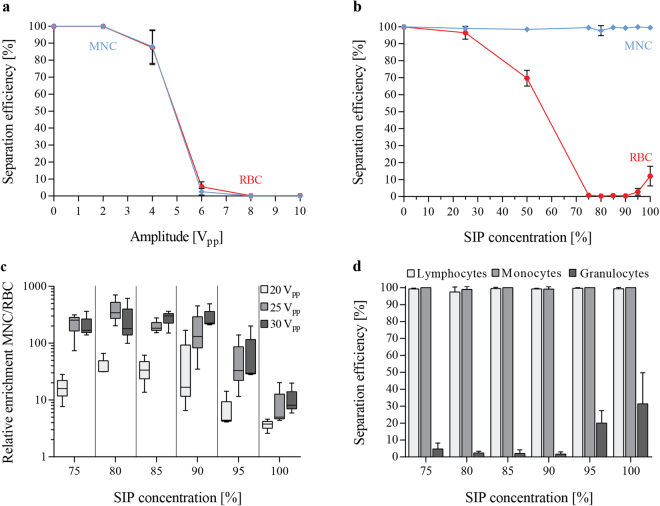Figure 2.
Optimizing buffer condition changes acoustic mobility of blood cells and enables separation of mononuclear cells (MNC) from red blood cells (RBC). (a) Separation efficiencies, defined as the ratio of cells in the side outlet as compared to both outlets, are shown for MNCs and RBCs in PBS with increasing strength of the acoustic field, peak-to-peak voltage, Vpp (b) as well as for varying buffer conditions by increasing the percentage of Stock Isotonic Percoll solution (SIP). A range of 75–100% SIP changes the acoustic mobility of MNCs and RBCs sufficiently to enable separation of the two cell populations. (c) The relative enrichment, calculated by the ratio of MNCs to RBCs after the separation compared to the input ratio, MNCs at different SIP concentrations ranging from 75–100% and at different actuation voltages. (d) The separation efficiency for different white blood cell populations is shown in the same SIP range for 25 Vpp. (mean ± SD, n = 3).

